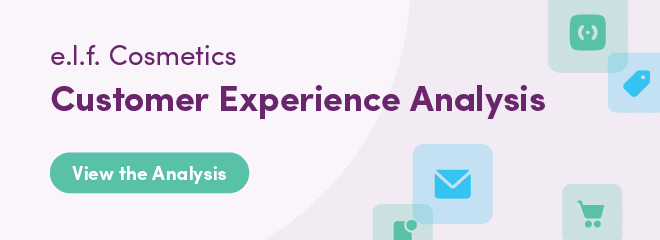Be our guest. Be our guest. Put our service to the test. There’s a small, but important distinction between a customer and a guest. “Customer” implies the intention to purchase. It comes with expectations.
A “guest,” though. A guest is a welcome visitor—one treated with care and comfort. A guest is someone invited.
Today’s consumers like being treated like guests, not customers. When finding brands, consumers are looking for ones that treat them with respect, listen to their opinions and personalize the customer experience. It’s a shift in perspective that marketers today must adopt to stay relevant and build longer-term relationships.
Our newest series, the Customer Experience Analysis, gives you a look at the journey from a different perspective, but one that is all too familiar to us: the consumer.
Much like our User Engagement Teardowns, we put ourselves in the position of an engaged consumer finding a brand for the first time. We completed various actions over the course of three weeks (created an account, browsed items, favorited items, abandoned carts) to trigger messaging.
The results are at the bottom of this post, free and ungated for your viewing pleasure.
The e.l.f. Cosmetics Customer Experience
In the graphic linked below, we have outlined the experience with U.S.-based cosmetics retailer e.l.f. Cosmetics, identified strengths and opportunities, and provided a few takeaways that you can start implementing into your strategies today.
All told, the breakdown of messages from e.l.f. over the research period was as follows:
- 36 total marketing messages
- 28 emails (25 promotions, 2 welcome emails, 1 transactional email)
- 8 mobile messages (7 push notifications, 1 SMS message)
Whether you’re in e-commerce or retail or neither, the takeaways from our analysis of the e.l.f. experience relate to most marketing strategies.
For example, e.l.f. illustrates that great branding only takes your marketing so far. User behavior data, such as browsing or cart abandonment, should drive the customer experience and personalize the journey in a way that incentivizes engagement and fosters a deeper connection.
With that said, these analyses are not a comprehensive look at a brand’s journey. We’ve included enough actions in three weeks that we can get a good look at a portion of the journey, but there are aspects that we have not covered.
For instance, e.l.f. might increase the personalization of its messaging as users continue to accrue points in their profile. The takeaways presented here are related strictly to the beginning of the customer-e.l.f. relationship and could promote increased engagement earlier on.
By shifting the perspective to that of the consumer, we hope this series helps spark ideas to bring your customers an even better experience. Take a look at e.l.f. and once you’re done, check out our last analysis: ASOS.






























